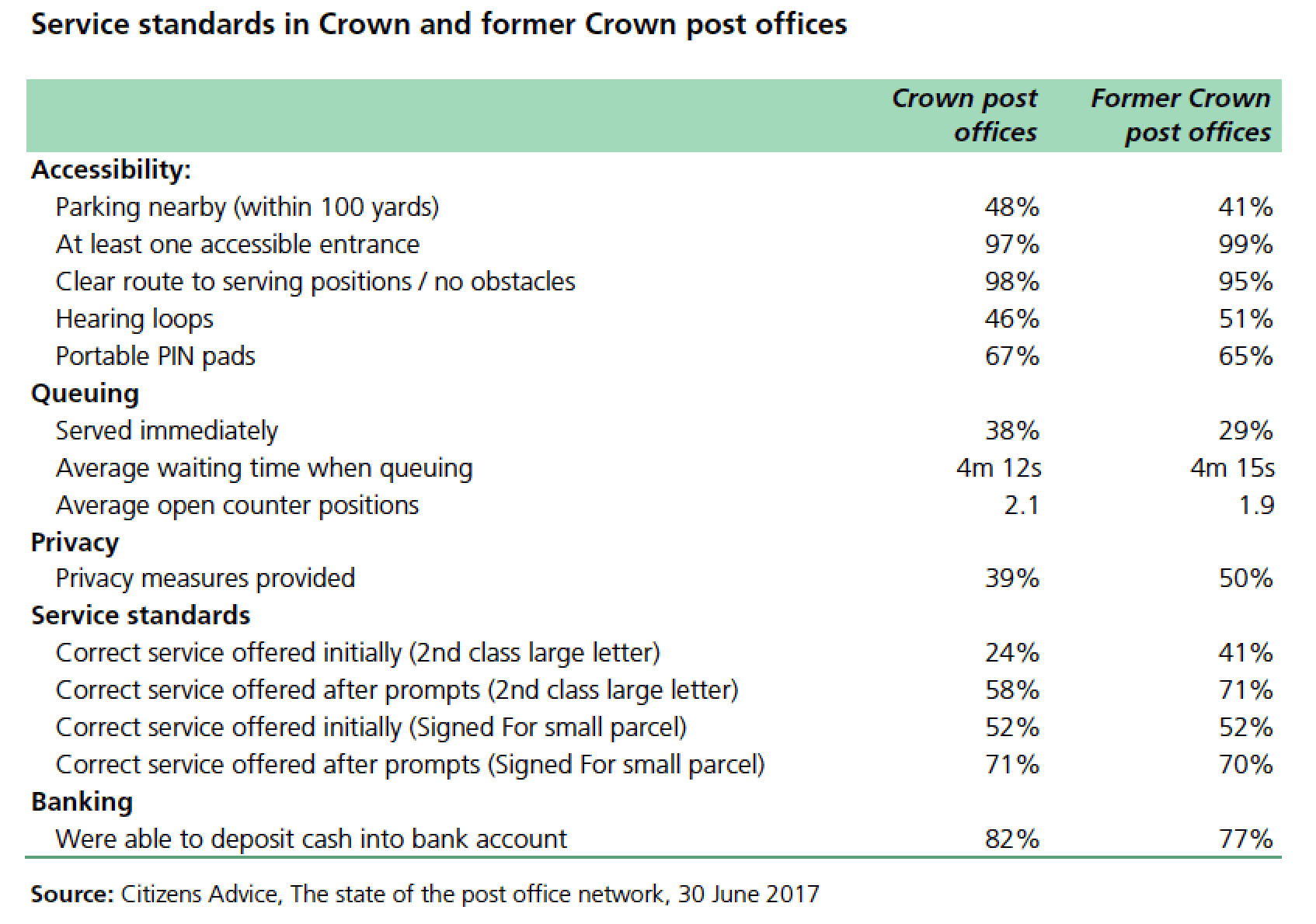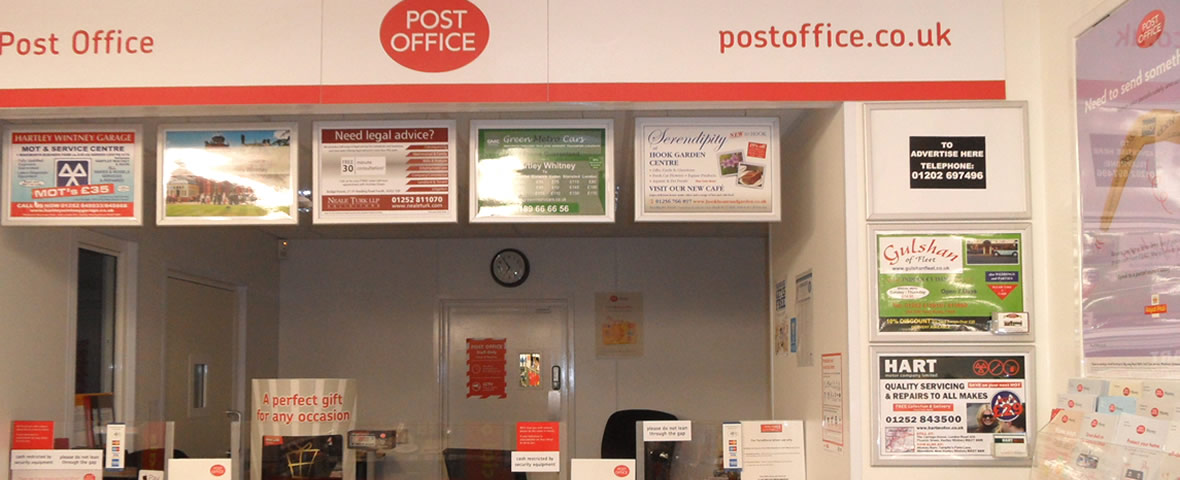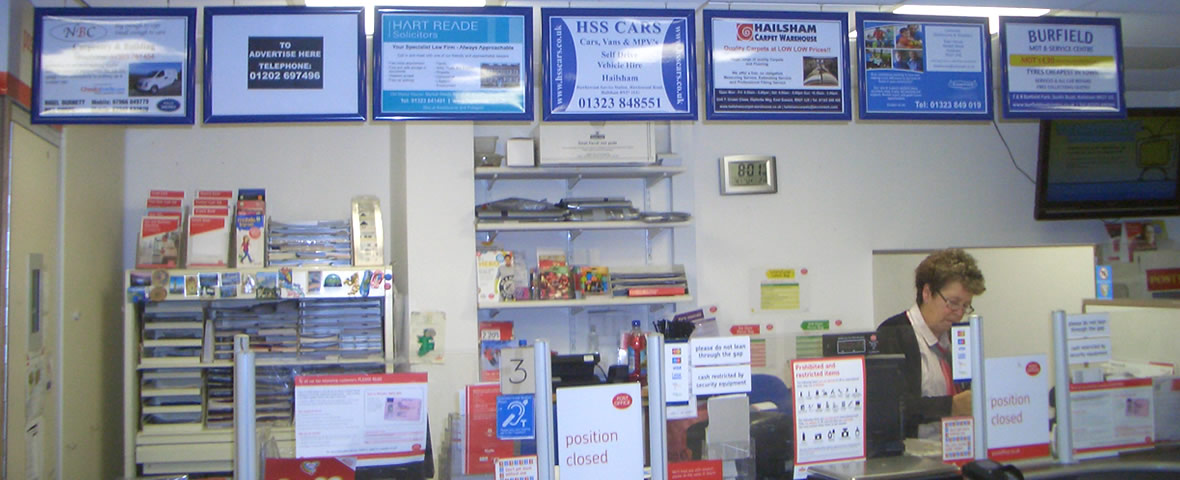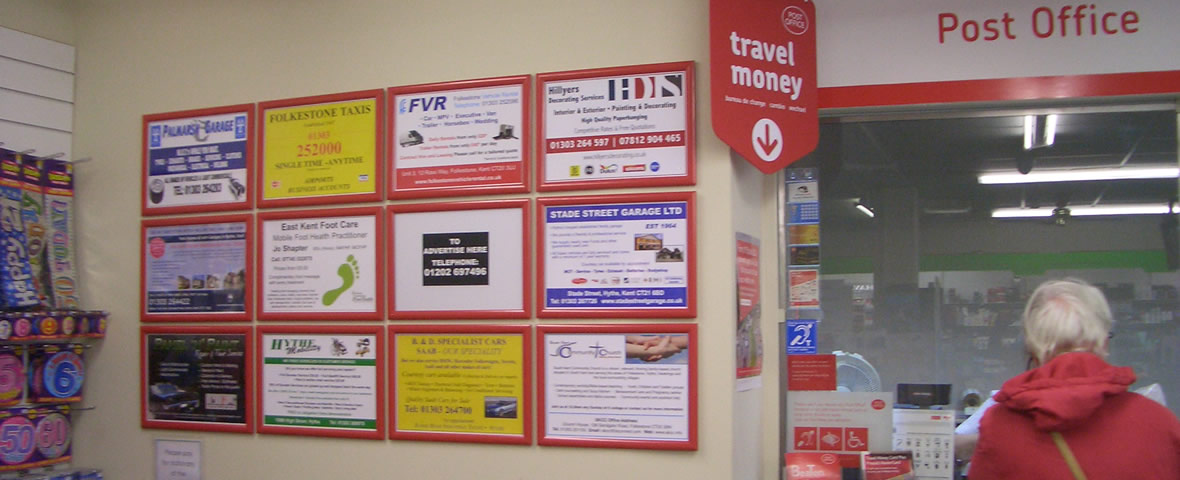Post Office Customers
Post Office Statistics Update February 2020
The following information is taken from House of Commons Briefing Paper number 7750 published on 12th April 2019 entitled “The Post Office” and House of Commons Briefing Paper number 2585 published on 9th August 2018 entitled “Post Office Numbers” and based on data assembled in March 2018.
It also quotes extracts from the YouGov report for the Department for Industry, Business, Energy and Industrial Strategy dated November 2016
1 – Overall Post Office network size
As of March 2018 there were 11,547 branches in the Post Office network. Since around 2009 the number of post offices in the UK has remained reasonably consistent.
The vast majority of post offices (around 98%) are operated by franchise partners or sub-postmasters, who are independent business people.
Between 2010 and 2017, the Government allocated £2 billion to fund the Post Office’s modernisation and transformation programme. In December 2017, the Government agreed a new funding package of £370 million for the Post Office to run till 2021. As part of this funding package, the Government Network Subsidy Payment continues to be reduced.
Modernisation has seen the number of Crown Post Offices, those run directly by the Post Office, decrease in recent years. Some branches have been franchised to partners such as WHSmith. Many non-Crown Post Offices have been converted, moved or modernised into new types of branches.
2 – Access Criteria
In return for its package of funding for transformation and modernisation, the Post Office is committed to investing in the network, and maintaining around 11,500 branches with no further substantive reductions and continued accessibility for all at the national level.
The Post Office is required by government to meet six ‘Access Criteria:
- 99% of the UK population to be within three miles of their nearest post office outlet;
- 90% of the UK population to be within one mile of their nearest post office outlet;
- 99% of the total population in deprived urban areas across the UK to be within one mile of their nearest post office outlet;
- 95% of the total urban population across the UK to be within one mile of their nearest post office outlet;
- 95% of the total rural population across the UK to be within three miles of their nearest post office outlet.
- 95% of the population of every postcode district to be within six miles of their nearest post office outlet.
3 – Types of Post Offices
Post office branches operate under different contract types. There are three main contract types of post office;
- Crown post office branches: those post offices that are directly managed by Post Office Ltd.
- Agency post office branches: post offices owned and managed by either an independent postmaster or a larger franchise partner (for example WH Smith or the Co-operative).
- Outreach services: typically small part-time branches that may use a village hall or mobile van to provide post office services to communities that might not otherwise receive them.
At the end of March 2018, there were
- 9,768 agency branches, 85% of the network.
- 1,517 outreach services, 13% of the total network.
- 262 Crown branches, 2% of the Post Office Network.
4 – Post Offices by location
Urban and rural post office branches
There are more post offices in rural locations than there are in urban locations. At the end of March 2018 there were 6,110 post offices in rural locations in the UK, 53% of the Post Office Network, and 5,437 post offices in urban locations, 47% of the network.
5 – Number of post offices by UK region and country
North East 490
North West 1,119
Yorkshire and The Humber 951
West Midlands 900
South West 1,268
South East 1,373
London 662
East of England 1,116
East Midlands 879
Northern Ireland 485
Scotland 1,398
Wales 906
6 – Post Office Usage – the social value of post offices
On the 8 November 2016 the Department for Business Energy & Industrial Strategy alongside UK Government Investments published an Independent study, conducted by YouGov, The Social Value of the post office network.
The study sought to understand and quantify the value that people and businesses place on the Post Office network and the services it provides. The study was based on large scale surveys of both individuals and small and medium sized businesses. The study based its headline estimate of the social value of the Post Office by asking survey respondents what they are ‘willing to pay’ for Post Office services.
Based on these responses the researchers made three estimates of the ‘overall social value of the Post Office’ using different calculation methods. These valuations were £4.3bn, £7.3bn and £9.7bn per year.27 In 2017/18 the Post Office reported total costs of just under £1bn.28
The study also collected data on individuals and businesses use of post office services.
Key findings include:
- 95% of survey respondents use the post office at least once a year.
- 96% of individual post office users, and 88% of businesses used the Post Office for ‘standard postal services’. 58% of individuals and 77% of businesses used the post office for specialist postal services.
- Many individuals do not know of alternatives to the post office for standard and specialist postal services. 57% of individual survey respondents believe there is no alternative to the post office for standard postal services, 43% believe there is no alternative for specialist postal services.
Citizens Advice regularly carry out consumer research on the Post Office.
In 2017, 81% of survey respondents described the Post Office as important to them and 49% said it is either very or extremely important. 97% of consumers regarded the Post Office as ‘trustworthy’.
Citizens Advice have found that disabled consumers are more reliant on postal services.
29% of disabled people use a post office at least once a week or more, compared with 22% of non-disabled people. 91% of disabled people describe the post office as essential.
Research from Citizens Advice Scotland (CAS) found that the Post Office was particularly important to small businesses in Scotland. 47% of Scottish businesses visit a post office at least once a week, compared with 28% in Britain as a whole. 19% of Scottish small businesses say they could not function without post. CAS suggests this is because of the higher proportion of rural post offices in Scotland.
7 – Service Levels
Citizens Advice carried out mystery shopper research in 2017 looking at the standard of services across different types of post office.
They concluded that:
Overall, the post office network is performing well, considering its size, complexity and the significant change it has been through since 2012. New branches are also performing in line with, or better than, traditional post offices.
The table shows key results of the study for a variety of measures, comparing Crown post offices with former Crown post offices (those that have since been franchised).
Overall this research suggests that some aspects of the service in former Crown post offices are a bit better than that in current Crown post offices, some aspects of the service are a bit worse and many aspects are similar.

8 – Usage Patterns
In this section we present a summary from the survey about how individuals and SMEs use the Post Office network. It mainly covers the behaviour of users rather than non-users and examines where they travel from, how they get to a Post Office, how long it takes, how far away they are, and how many and what types of branch they use.
From where do people set off when they travel to the Post Office?
The survey found that 86% of individuals travel from their home when they use the Post Office and 12% from their workplace. Getting to a Post Office from work is significantly more common among the younger age group – 21% of 18-39s go there from work, compared to 12% of 40-64s and only one percent of 65 and over.
A substantial 21% of users in London get there from work, which compares sharply with a low of eight percent in the East Midlands and North East. In total 13% of users in urban areas go from work, compared to nine percent of their rural counterparts.
How do people travel to a Post Office?
The majority of individuals will most often journey on foot (56%), with 37% using a car, van or motorbike either as the driver or a passenger. Just five percent use public transport although this rises to seven percent of those aged 65 and over and is at 13% of those without household access to a car. Using a car to get to a Post Office is significantly higher among those living in rural locations (53%).
In contrast, more SME users travel to the Post Office by car (50%) than by foot (46%).Those from larger SMEs are more likely to walk perhaps because they are travelling from offices rather than being mobile already – 57% of small organisations (10-49 employees) go by foot compared to 44% of sole traders.
How long does it take to travel to a Post Office?
Around a third of individuals (32%) estimate that it takes them less than five minutes to travel to the Post Office they use most often. Others (39%) think that it is between five and 10 minutes and, as a whole, 87% think that they are less than 15 minutes away. This varies by age with people aged 65 and overestimating a longer travel time, for example, 41% thinking it is between 5 and 10 minutes compared to 35% of 18 to 39s.
For those with access to a car the journey times are significantly lower –the average time being 8.07 minutes, compared with 9.72 for those without a car. This translates to 34% of those with a car being able to travel to a Post Office in less than five minutes, as opposed to 27% without a car.
The average journey time for SMEs is shorter, perhaps reflecting their typical locations in town centres. Forty percent of SME users believe that they are five minutes or less away and in total 94% place themselves within 15 minutes of a Post Office.
How far away is a Post Office?
The vast majority of people (79%) believe themselves to be a mile or less from a Post Office–35% feel they are less than half a mile and another 21% are half a mile. Just five percent believe they are four miles or more away from a Post Office. There are no significant differences between users and non-users but nine percent of the latter are so uncertain that they could not estimate the distance, something that only one percent of users did.
Perceptions are substantially different between people in urban and rural locations – 83% of urban individuals input themselves a mile or less, compared to 64% of those living in a rural location. Whilst just two percent of urban dwellers think they are four or more miles away, 16% of rural people share the same perception.
SMEs have very similar estimates, with 78% saying a mile or less and five percent four or more miles.
_______________________________________________________________________
Citizens Advice report: Consumer Use of Post Offices 2017
Summary of findings
We have found that despite significant changes in the post office network and wider society, the vast majority of consumers (97%) and small businesses (93%) still use post offices. Most are frequent users and visit once a month or more often.
Consumers told us they value the diverse range of services provided through post offices. Mail services are still used more than any others, and stamps and letter postage are purchased most frequently. However, today parcel posting and mail order transactions are increasingly common.
1 in 5 consumers use a post office to withdraw cash from their bank account, and take-up may increase as bank branches continue to close. But far fewer people now withdraw their state benefits and pensions in cash from a post office.
Despite an overall decline in government-related transactions at post offices, consumers make significant use of government application services. For example, half say they pick up government forms and use the passport application checking service. Far fewer consumers pay their bills or transact with their local councils through post offices.
Although post offices are important for most consumers and small businesses, the research shows us that they are especially crucial in rural areas and for vulnerable groups including older people and people on low incomes.
It is also clear from the findings that distinct demographic groups use post offices differently. Younger people and those on higher incomes use parcel and mail order services more than other groups. Older people and those on low incomes make greater use of cash and banking services and bill payments. The more vulnerable groups and remote rural residents make most use of a post office for informal community services like support and information or as a place to meet other local residents and friends.
Future needs
Demand for post offices is likely to remain high. Nearly 9 in 10 consumers (89%) and small businesses (87%) say they expect to be using post offices just as much or more in 2 years’ time.
This anticipated high level of demand applies across the range of consumer groups. People aged 16-30 (88%) and those in socio-demographic group AB (89%) are just as likely to say they expect to be using a post office just as much or more in 2 years’ time
MVL Audience
* 1.85 million transactions per 4 weeks
* 96% Privately owned vehicles
* 85% Own their home
* 75% Holiday in past 12 months
* 33% Have children
* 26% Planning to replace car in the next 12 months
Retirement Pension
* 1.926 million transactions every week
* 81% Going directly to the shops
* nearly 60% own their own home
* 46% have another income (over state pension)
* Two thirds have grandchildren
* Six out of ten always use money off coupons
Child Benefit Audience
* 97% Principal shopper
* Over 7 out of 10 going directly to shops
* 66% collect weekly
* 94% less than 44 years old
* 76% expect to find government information in Post Office
* Over half buy clothes by mail order



